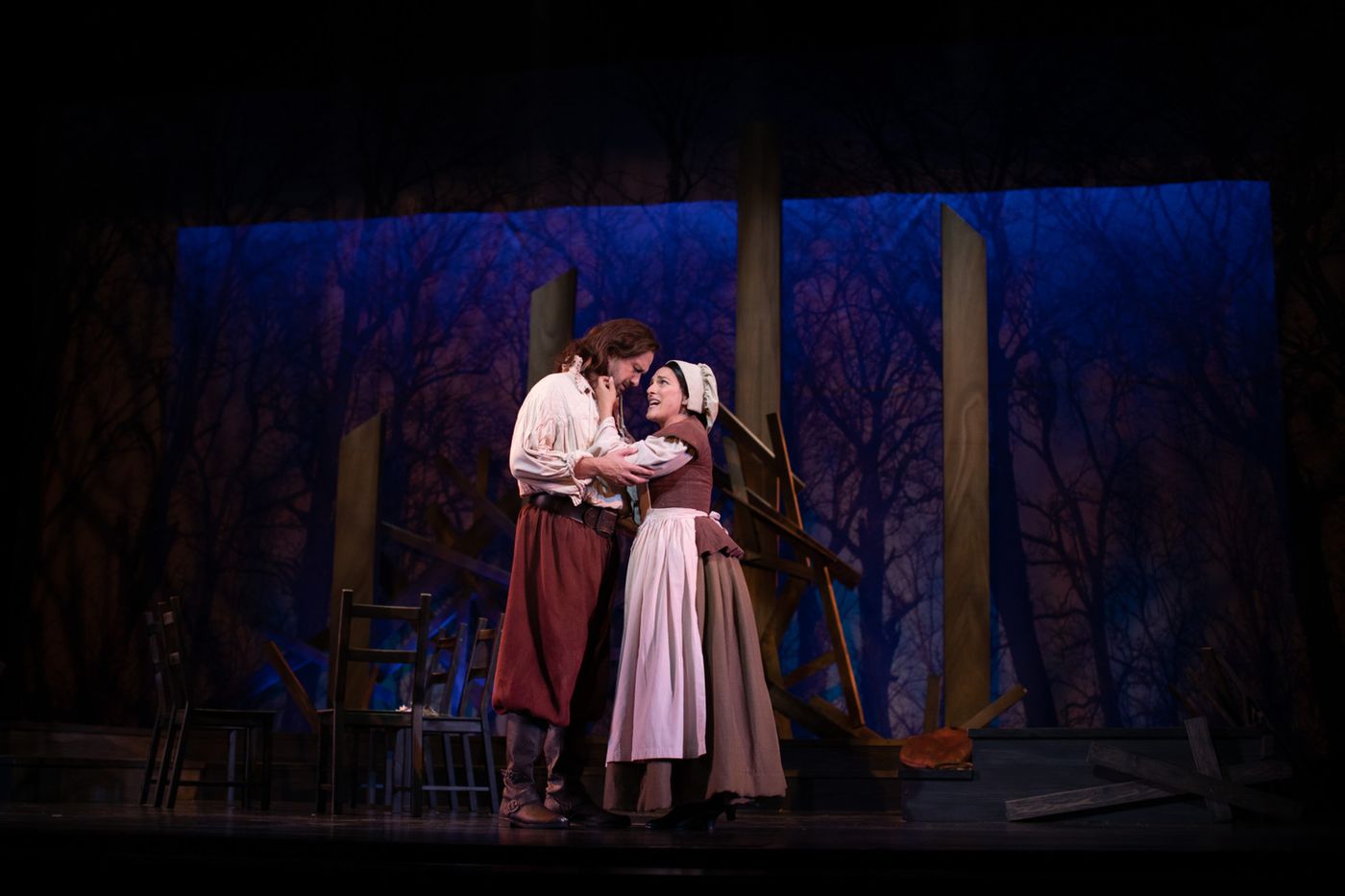Review: THE CRUCIBLE at Lobero Theatre
 Which is more important to a man, his life or his reputation? That is the question asked by Robert Ward's opera THE CRUCIBLE. The work presented on Friday April 26, 2019, by Opera Santa Barbara gave 16th century colonist John Proctor's answer to the question.
Which is more important to a man, his life or his reputation? That is the question asked by Robert Ward's opera THE CRUCIBLE. The work presented on Friday April 26, 2019, by Opera Santa Barbara gave 16th century colonist John Proctor's answer to the question.
Robert Ward's Pulitzer Prize-winning 1961 opera, THE CRUCIBLE, is based on Arthur Miller's 1953 play of the same name. The action takes place in Salem, Massachusetts, in 1692 when 142 people were accused of witchcraft and twenty of them were hanged. Writing at the height of the McCarthyism scare, Miller conceived of his play as an allegory about unbounded accusations brought on by the ability of those accused to evade punishment if they named "co-conspirators." In 1956, Miller had been cited for contempt of Congress when he refused to name colleagues he knew to be "fellow travelers."
Miller first thought of writing THE CRUCIBLE as an opera, so he asked composer Marc Blitzstein how long it would take to learn to write one. Not caring much for the idea that it might take him 20 years, Miller wrote the seventeenth century Massachusetts story as a play.
Stage director Stephanie Havey told highly dramatic story of THE CRUCIBLE in a realistic manner with never a pause for an intermission. That kept the tension building until the end of the show. Havey made a point of letting the audience see the different personalities of various cast members, many of whom were dressed alike. The women, even the Parris family's slave from Barbadoes, wore light colored dresses and caps that covered their hair. The farmers wore rugged outfits and the judges wore suits of expensive black cloth. Everyone in the colony had to be Christian and attend a church of the same Protestant sect.
As part of Havey's relatively modern production, Steven C. Kemp's scenic design showed logs and wood behind an indoor setting. It was a forest falling into a preternatural state of disarray well matched to the minds of the angry, judgmental and venal leaders allowing the formation of a social catastrophe within the colony. Jared A. Sayeg's varied atmospheric lighting designs helped the scenery underscore aspects of the story.
As the opera opens, Kelly Guerra as Betty Parris has a violent seizure. Other neighbors' daughters act in a similar fashion and the Parris family's slave, Tituba, played by dramatic singing actress Nina Yoshida Nelsen, is suspected of inciting young women to witchcraft. When Tituba is frightened into confessing a conversation with the devil, Betty recovers. As the act ends, the community members become a church choir and they express their joy in the melodic beauty of a hymn to Jesus.
Act II takes place on the Proctor family farm. Wayne Tigges as John Proctor and Audrey Babcock as his wife, Elizabeth, are arguing over his affair with their servant, Abigail. Since Proctor ended the relationship, Abigail, played by Anya Matanovic, has begun to accuse Elizabeth and other women in Salem of witchcraft. Later, Reverend Hale, sung beautifully by the smooth-voiced Colin Ramsey arrives to arrest Elizabeth. Since Abigail is threatening Elizabeth's life, John presents testimony from Mary Warren, sung by Jennifer Lindsay, that finds Abigail and her witnesses fraudulent.
The last act opens with the jailed Tituba singing of her home island. She seems to dream and she may have lost her grip on reality during what might be called Tituba's Mad Scene. Hers is the only part I think could have been enlivened by a larger, more forceful personality.
The important people from Salem arrive and Judge Danforth, sung by voluminous-voiced Corey Bix, asks Elizabeth to convince her husband to confess. He speaks of his sin, but refuses to sign a document referring to it saying, "I have given you my soul but I will not give you my name." He loses his life to save his reputation, the point Miller wanted to make about the McCarthy hearings.
All of the artists in this cast had the large voices needed to contend with Ward's dramatic orchestral music and they outsang each other when necessary. In many scenes the voices seem to accompany the orchestra which often had the more melodic segments.
In this production, acting and intricate dramatic singing were of paramount importance. All the members of the huge cast acquitted themselves with near perfection. Singing this kind of dramatic music for a long time with no break is not easy but these artists paced themselves well and hit all their notes right through to the end.
Conductor Kostis Protopapas, who is the company's Artistic and General Director, led the 20-member orchestra in a fine reading of Ward's fascinating score. The orchestral part contains may kinds of music, ranging from the exotic colors of Debussy to aspects of idiomatic American jazz and blues. In this work, the orchestra had most of the good tunes while the singers concentrated on the action. This was an unusual opportunity to see an opera that is not often played outside of universities. It's a very interesting work and I hope more regional companies will produce it.
Photo by Zach Mendez for Opera Santa Barbara
Reader Reviews
Videos

